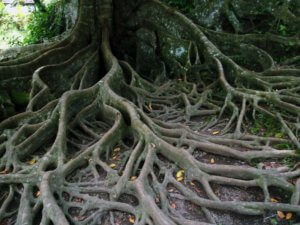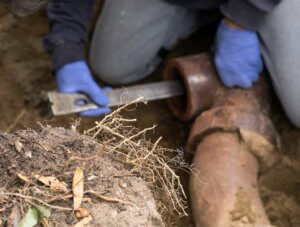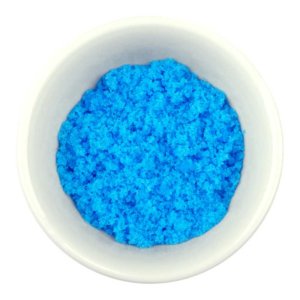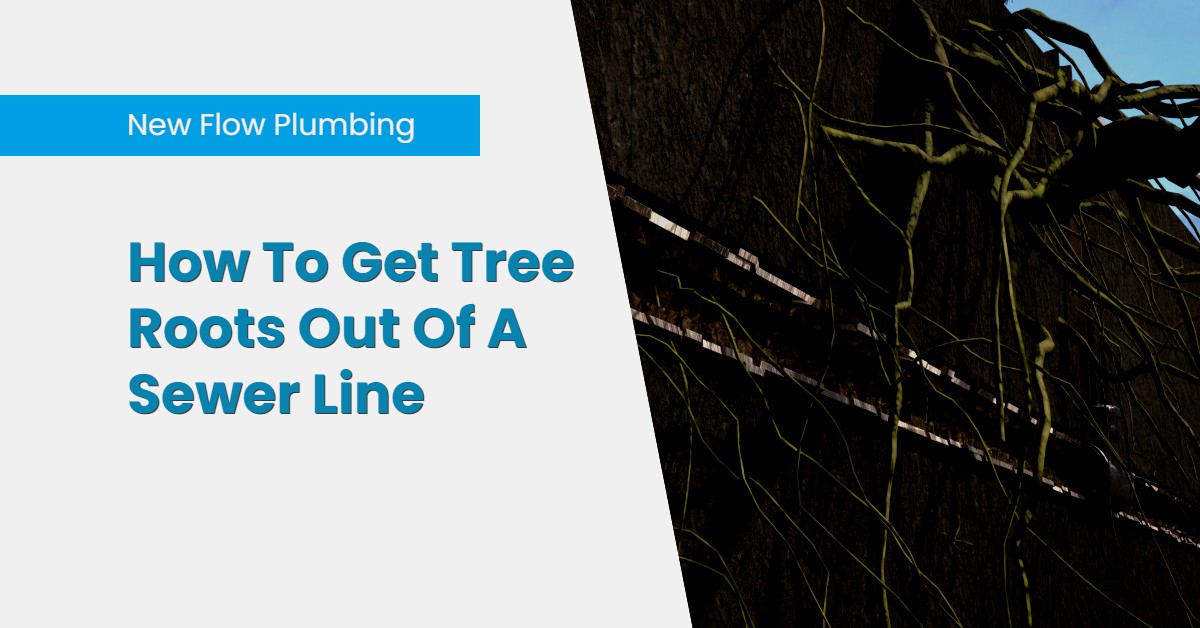How To Get Tree Roots Out Of A Sewer Line
By New Flow Plumbing Inc.|Published On: September 24th, 2020|Categories: Residential Plumbing, Sewer Systems|
Are your drains sluggish? Hearing weird noises coming from them when you do things like flush the toilet? If so, you might have tree roots in your sewer line. Since these can be a real problem – and cost you a lot of money to fix – you’ll want to take care of the problem right away before it gets any worse.

Tree roots love sewer lines
Tree roots can’t get enough of sewer lines. They’re drawn to them for water and nutrients, and if there are cracks in the sewer line, they’ll find a way in.
It’s important to note that tree roots aren’t the real cause of clogged sewer lines. Tree roots are just opportunistic. They take advantage of sewer lines that have weakened to the point where they have tiny holes and cracks in them. They then force their way in via these holes and cracks in order to get at water and nutrients. Once they’re inside the sewer line, they start to grow. Soon, your drains won’t empty as quickly as they once did. If you don’t fix the problem right away the tree roots could eventually break the pipe. If that happens, you’ll be looking at paying a professional to do an expensive repair job. So, you want to get tree roots out of a sewer line before they cause major damage. In this article, we’re going to go over a few things you can do to get tree roots out of a sewer line while they’re still small.
Signs you might have tree roots in your sewer line
Below are seven signs you have tree roots in your sewer line.
- Constant backups – Your sinks, showers, and bathtubs are all connected to the main sewer line. If you notice all of your fixtures are backing up, your main sewer line could be clogged with tree roots.
- Sewer odors – When tree roots break into pipes, they allow sewer gases to escape. If you smell sewage in your home or yard, you might have tree roots in your pipes.
- Slow drains – If tree roots are in your sewer line, you will notice water draining slower than usual. That’s because the tree roots are shrinking the diameter of your pipes, forcing waste to flow through smaller spaces.
- Foundation issues – If your house was built on expansive soil (soil that expands when it’s wet and shrinks when it dries), you could experience foundation issues. If tree roots break into a sewer line, they allow waste to escape and absorb into the surrounding soil. Once the soil expands or shifts, your foundation can shift as well.
- Unwanted pests – Mice and rats can fit through cracks the size of two pencils. If tree roots are in your sewer line, chances are pests are using the cracks as an opening. When sewage leaks from a cracked sewer pipe, you may notice flies and cockroaches in your home or yard.
- Unnatural yard growth – If you notice a section of your grass is growing faster than usual, tree roots could have cracked your sewer pipe and allowed waste to absorb into the soil. Sewage acts as a natural fertilizer and increases yard growth.
- Potholes – Tree roots will allow sewage to escape. When sewage comes in contact with soil, you may notice potholes or strange dips in your yard.

DIY small tree root in sewer removal solutions
How to kill small tree roots with rock salt, copper sulfate, or sodium chloride
Rock salt is not the same as coarse sea salt. It’s also not table salt. Rock salt is the stuff people throw on icy sidewalks. You can find it at your local hardware store.
For small tree root removal…
Flush a couple of pounds of rock salt down your toilet, 1/2 pound at a time. After you flush the last batch, don’t flush or turn on the water for about 12 hours. This gives the rock salt time to sit in the pipes and create an environment that’s hostile to tree roots.
You can do this same thing using sodium chloride (table salt) instead.
One word of caution…
It’s possible for salt to kill not only the roots but the tree as well, and any other vegetation growing in the area. Salt also has the potential to corrode and weaken your pipes.
You can also try…

Copper sulfate, or bluestone, as it’s sometimes called. This is an inexpensive herbicide and algaecide sold at most hardware and garden supply stores.
For small tree root removal…
Flush 1/2 cup of copper sulfate down the toilet. Flush a couple more times (without the copper sulfate) to move the crystals down the line. Open the window, keep all animals away (copper sulfate is toxic for them), and leave the house for a few hours. When you get back, flush again. If the blockage is still there, don’t despair. It could take a few days to work.
If this doesn’t get rid of the blockage, do the same thing once a day for a week. You can also make a habit of doing it once every 6 months to a year. It will keep small tree roots out and won’t harm the tree.
Because copper sulfate can harm animals, it has been banned in certain areas. So, before you use it, check with the local authorities.
How to kill small tree roots in sewer using a foaming tree root killer
Another option for small tree root removal is an herbicide which kills the roots and then prevents them from growing back because it leaves a residue behind that tree roots don’t like. You can buy it at a hardware, or home and garden store. Just follow the instructions on the label.
How to kill small tree roots in sewer by cutting them out
Small tree roots can also be cut out of the sewer line via a special mechanical auger that includes a cable with an attachment at the end designed to cut through small roots. The cable is fed into the sewer line and the blades at the end cut the roots. When you’re done, you’ll need to flush the roots out of the line.

How much does professional sewer tree root removal cost?
The cost of tree root removal depends on a variety of factors including your geographical location and how easy it is to access the pipe. Therefore, it’s impossible for us to give you an exact quote. The cost also depends on the number and size of the roots because this determines how long the job will take. In other words, is the crew going to be there all day or for just a couple of hours? However, we can say that the usual cost of the average professional tree root removal from a sewer line will probably be somewhere between $650 and $750.
Note: At New Flow Plumbing we don’t remove tree stumps or roots from yards. We only remove tree roots from sewer lines via hydro jetting or with robotic cutting equipment.
Keep in mind that this is a temporary solution. If you want a permanent solution the pipe will need to be either repaired via sewer pipe lining, replaced via pipe bursting, or perhaps replaced via conventional sewer replacement.
Does homeowner’s insurance cover the cost of sewer tree root removal?
Probably not, because the problem isn’t inside your home. However, there’s a chance it might if the problem is under the slab. Check with your insurance company to be sure.
How to permanently prevent tree roots from getting into your sewer line
All the methods we’ve listed above are temporary tree root removal solutions. The tiny cracks and holes that allowed the tree roots to get into the pipe are still there. So, they will get back in, and if you keep flushing salt down the toilet, your pipes could suffer and you could kill the tree itself, including any vegetation around it. Copper sulfate works, but it’s harmful to animals. So, you need a permanent solution, one that stops the tree roots from getting into your sewer line in the first place. One common symptom of a clogged sewer line is sewer odor.
Read more about: What Causes Sewer Odors Inside the House?
Sewer pipe lining
Sewer pipe lining is a minimally-invasive trenchless repair method that creates a new pipe inside your old one. Once it’s complete, the tree roots won’t be able to get back into the pipe. In other words, pipe lining is a permanent solution.
Learn more about: How To Replace Sewer Pipe
Since tree roots can eventually break your pipes and cost you an expensive repair job, it’s best to catch the problem early. Here are some things to look out for…
- Gurgling sounds coming from the toilet when you flush.
- Slow drains – including your toilet – that tend to backup.
- Clogs that keep returning after you’ve cleared them. This is because you haven’t taken care of the real problem: holes or cracks in your pipe. The roots just keep coming back.
- Obnoxious odors.
If you think you might have a problem with tree roots in your sewer line, the best thing to do is contact a sewer line professional for a sewer camera inspection. This is a non-destructive procedure that only takes about 30 minutes. It will easily find the exact location and extent of the problem. The sewer line professional will then be able to suggest the right solution.





